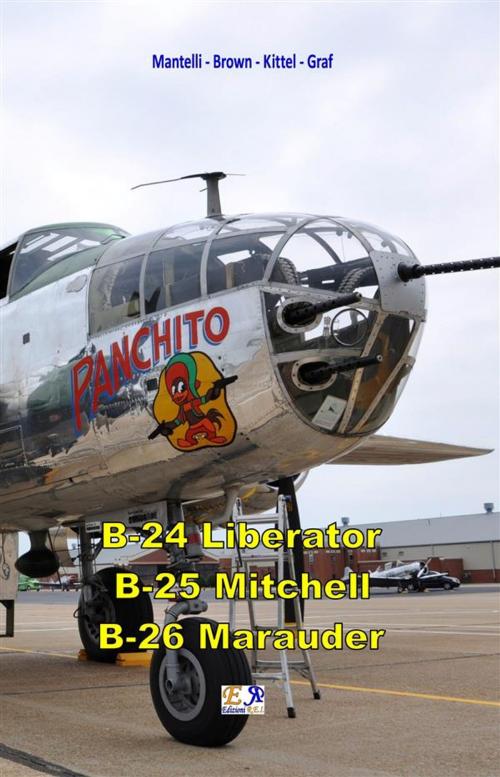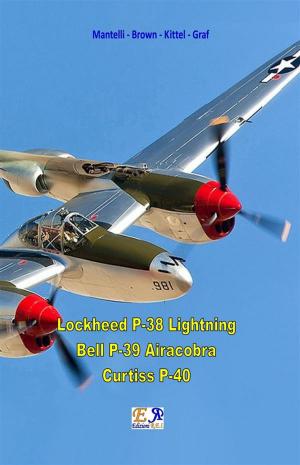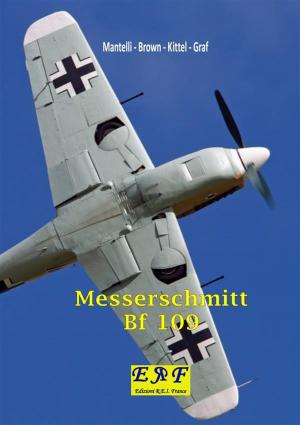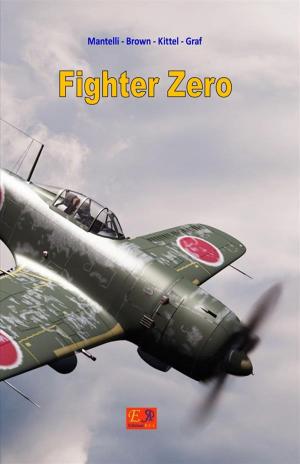B-24 Liberator - B-25 Mitchell - B-26 Marauder
Nonfiction, History, Military, Aviation, World War II| Author: | Mantelli - Brown - Kittel - Graf | ISBN: | 9782372973243 |
| Publisher: | Edizioni R.E.I. | Publication: | February 22, 2017 |
| Imprint: | Language: | English |
| Author: | Mantelli - Brown - Kittel - Graf |
| ISBN: | 9782372973243 |
| Publisher: | Edizioni R.E.I. |
| Publication: | February 22, 2017 |
| Imprint: | |
| Language: | English |
The Consolidated B-24 Liberator was a four-engine heavy bomber to medium-high wing (wing adopted a type known as a winger Davis, narrow and elongated, which became a distinctive feature comes along with the double oval). The Liberator was one of the most important American bombers. He finished the war as the plane from the US war constructed in as many examples in history; It was built, in fact, more than 18,000 specimens. It was, along with the B-17 Flying Fortress, the flagship bomber of the United States Army Air Force.
The North American B-25 Mitchell was a twin-engine medium bomber manufactured by North American and mainly used by the USAAF during the Second World War. The B-25 Mitchell North American formed together with Douglas A 20 Havoc and the Martin B-26 Marauder, the backbone of the business units supporting the USAAF during World War II. Mitchell, in particular, proved a versatile aircraft that it immediately attracted the popularity. Although he had no heavy offensive load, its armament with a piece of heavy artillery, good for both offensive and defensive purposes, it was particularly feared by German pilots, Italian and Japanese.
The Martin B-26 Marauder was an American twin-engine bomber of World War II produced by the Glenn L. Martin Company. It was the first medium bomber used by the United States in the Pacific War at the beginning of 1942. He worked also on the Mediterranean and on the front in Western Europe. Immediately after its entry into service he earned the nickname of "Factory of widows" because of the high rate of accidents, especially on take off and landing. The Marauder had to be driven carefully respecting the speed limit set by the AFM, especially in the approach to the runway and when an engine was out of order. The high speed to maintain immediately before landing (150 mph - 241 km / h) intimidate the pilots, accustomed to much lower speeds, but if instinctively slowed down, the plane immediately stallava and crashed to the ground.
The Consolidated B-24 Liberator was a four-engine heavy bomber to medium-high wing (wing adopted a type known as a winger Davis, narrow and elongated, which became a distinctive feature comes along with the double oval). The Liberator was one of the most important American bombers. He finished the war as the plane from the US war constructed in as many examples in history; It was built, in fact, more than 18,000 specimens. It was, along with the B-17 Flying Fortress, the flagship bomber of the United States Army Air Force.
The North American B-25 Mitchell was a twin-engine medium bomber manufactured by North American and mainly used by the USAAF during the Second World War. The B-25 Mitchell North American formed together with Douglas A 20 Havoc and the Martin B-26 Marauder, the backbone of the business units supporting the USAAF during World War II. Mitchell, in particular, proved a versatile aircraft that it immediately attracted the popularity. Although he had no heavy offensive load, its armament with a piece of heavy artillery, good for both offensive and defensive purposes, it was particularly feared by German pilots, Italian and Japanese.
The Martin B-26 Marauder was an American twin-engine bomber of World War II produced by the Glenn L. Martin Company. It was the first medium bomber used by the United States in the Pacific War at the beginning of 1942. He worked also on the Mediterranean and on the front in Western Europe. Immediately after its entry into service he earned the nickname of "Factory of widows" because of the high rate of accidents, especially on take off and landing. The Marauder had to be driven carefully respecting the speed limit set by the AFM, especially in the approach to the runway and when an engine was out of order. The high speed to maintain immediately before landing (150 mph - 241 km / h) intimidate the pilots, accustomed to much lower speeds, but if instinctively slowed down, the plane immediately stallava and crashed to the ground.















